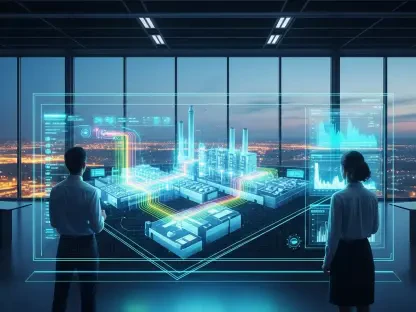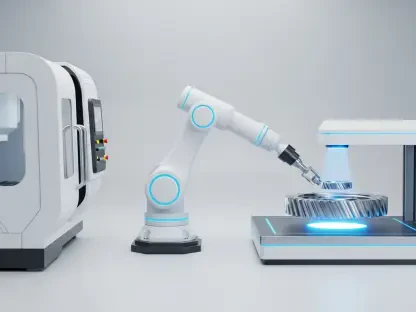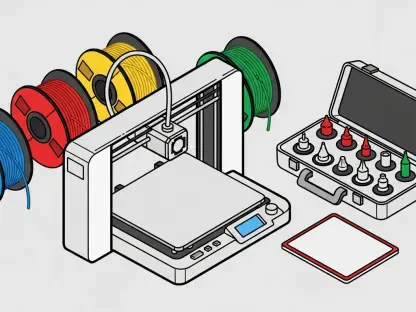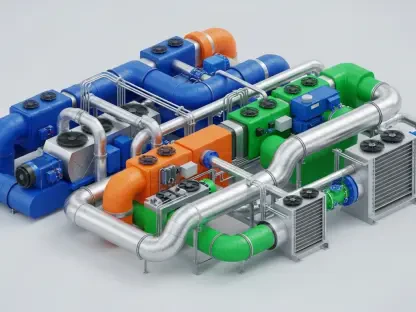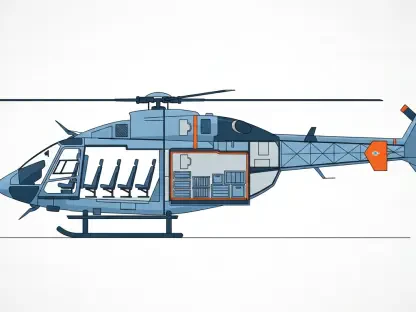In the fast-paced world of packaging, relying on outdated legacy systems can hold companies back from achieving their full potential. Medium-sized packaging companies find themselves at a crossroads where modernization isn’t just a luxury but a necessity for staying competitive. Transitioning from these well-worn, familiar systems to advanced ERP/MIS solutions is a daunting yet rewarding journey. Here, we explore the compelling reasons to modernize and the transformative benefits that follow.
Breaking the Legacy System Mindset
Legacy systems, much like old trusted friends, have become ingrained in the operational fabric of many packaging companies, despite their age. These systems are often perceived as sufficient and functional, creating a “don’t fix what isn’t broken” mentality among stakeholders. Jeff Collins, a former VP of Manufacturing turned Solutions Analyst, encapsulates this outlook succinctly, noting the comfort and reliability these systems seem to offer. However, beneath this façade of reliability lurks a growing inefficiency that stakeholders often overlook.
While the familiar interface and routines of legacy systems provide a sense of security, they also foster complacency, hindering innovation and adaptation to modern challenges. Overcoming this mindset requires a fundamental shift in thinking, emphasizing the potential for growth and efficiency through advanced technology. Firms must recognize that clinging to outdated systems prevents them from leveraging new capabilities that could significantly enhance operational effectiveness. It’s a shift in perspective that starts at the top and must permeate through all levels of the organization.
Confronting Fear and Apprehension
Change is inherently frightening, especially when it involves overhauling systems that have been in place for decades. The prospect of transitioning to a new ERP/MIS system comes with fears of operational disruption, costly downtimes, and resistance from staff accustomed to the old way of doing things. This fear can paralyze decision-making, leading to missed opportunities for improvement and prolonged use of inefficient systems.
However, these apprehensions, though valid, can be managed with careful planning and clear communication. Highlighting the long-term benefits and conducting thorough training sessions can help mitigate resistance and ease the transition process. Gradual, well-planned implementation phases can reduce perceived risks and allow employees to adapt at a comfortable pace. Companies that successfully navigate these fears often emerge stronger and more efficient, with systems that align better with modern business needs and customer expectations.
Hidden Costs of Legacy Systems
While legacy systems may appear cost-effective at first glance, they often come with hidden and escalating expenses that become more pronounced over time. These outdated systems struggle to keep up with the demands of modern business, leading to inefficiencies, manual errors, and data inaccuracies. Jeff Collins’ experience at Colonial Printing Mailing & Packaging reflects this challenge. Their aging MIS system required excessive manual data entry, paper logs, and Excel spreadsheets to function. This process not only consumed time but also left room for significant errors, hampering overall efficiency.
Failing to modernize means missing out on automation, real-time data tracking, and streamlined workflows that modern ERP/MIS solutions offer. These tools can transform operations by reducing manual processes, improving data accuracy, and providing valuable insights through real-time analytics. This can significantly cut costs, enhance productivity, and ultimately lead to better decision-making based on more accurate data. The shift from reactive problem-solving to proactive optimization becomes possible only with modern technology.
The Need for Real-Time Data and Analytics
In today’s competitive market, having access to real-time data is crucial for making informed decisions quickly. Legacy systems often fail to provide this essential feature, limiting a company’s ability to stay agile and responsive. For example, Colonial Printing struggled with delayed reports and a lack of real-time visibility, impeding their capacity to respond to market changes promptly and accurately.
Modern ERP/MIS solutions offer unparalleled access to real-time data, enabling managers to monitor operations, track key performance indicators (KPIs), and make swift, data-driven decisions. This capability can significantly enhance a company’s agility, allowing it to adapt to market dynamics and customer demands more effectively. Real-time data provides the transparency needed to identify potential issues early on, allowing timely interventions that prevent small problems from escalating into major disruptions.
Enhancing Inventory Management
Inefficient inventory management is another major drawback of legacy systems, which often resort to cumbersome manual processes. Dale Ford, a management consultant, highlighted the plight of a commercial and folding carton plant in Georgia, which faced significant inventory issues due to outdated systems. Relying on Excel spreadsheets led to overages, stockouts, and a lack of inventory assessments, resulting in operational inefficiencies and increased costs.
By adopting modern ERP/MIS solutions, companies can gain accurate, real-time inventory tracking, automated stock alerts, and efficient order processing. These enhancements streamline inventory management, reduce waste, and improve overall operational efficiency, leading to better service levels and customer satisfaction. Modern systems provide a holistic view of inventory levels, enabling better demand forecasting and more effective supply chain management.
Overcoming Homegrown System Limitations
Homegrown systems, while tailored to specific needs, often come with their own set of challenges that become increasingly difficult to manage over time. Amy Plier from Wausau Container Corp shared her experience with a custom-built system using FoxPro. As technology advanced, the system’s limitations in compatibility and security became apparent, necessitating a switch to a more robust and scalable solution.
Modern ERP/MIS systems are designed to integrate seamlessly with other technologies, breaking down information silos and improving data security. They provide a unified platform that supports various functions, from shop floor data collection to customer relationship management, enhancing overall business performance. Transitioning to a commercial ERP/MIS solution also transfers the burden of ongoing maintenance and updates to the software provider, freeing up internal resources to focus on core business activities and strategic initiatives.
Operational Efficiency and Growth
Transitioning to modern ERP/MIS solutions unlocks significant gains in operational efficiency. Companies can automate workflows, reduce manual interventions, and streamline processes, leading to faster turnaround times and higher productivity. These systems support scalability, allowing businesses to grow and expand without being constrained by outdated infrastructure. Automation reduces the human errors associated with manual processes, ensuring more reliable and consistent outcomes.
Moreover, modern solutions offer advanced analytics and reporting capabilities, providing deep insights into operational performance and helping identify areas for improvement. This data-driven approach fosters continuous improvement, enabling companies to refine processes and boost overall efficiency. Businesses that embrace modern ERP/MIS solutions position themselves better to tackle future challenges, adapting swiftly to evolving market conditions and technological advancements.
Conclusion
In today’s rapidly evolving packaging industry, clinging to outdated legacy systems can seriously hinder a company’s growth and ability to compete. Medium-sized packaging firms often find themselves at a pivotal moment where embracing modernization is no longer optional but essential for staying ahead. Advancing from these old, familiar systems to state-of-the-art ERP/MIS solutions may seem like a formidable task, but the rewards are worth the effort.
There are compelling reasons why modernizing these operations is a must. For one, advanced ERP/MIS systems offer improved efficiency and productivity by integrating various business functions into a single, streamlined platform. Additionally, these modern systems provide better data analytics, allowing companies to make more informed decisions and respond quickly to market changes. Enhanced customer service is also a significant benefit, as companies can manage orders and inventory more effectively.
Modern systems also support better compliance and reporting, which is increasingly important in a regulated industry. Beyond day-to-day operations, adopting advanced technology can transform the company culture, fostering innovation and making it easier to attract top talent. Therefore, while the transition might demand time, effort, and resources, the long-term advantages—such as heightened competitiveness, improved customer satisfaction, and increased operational efficiency—far outweigh the initial challenges. Modernizing is not just about keeping up; it’s about setting the stage for sustainable growth and success.


